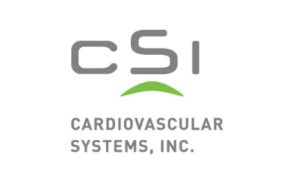 Cardiovascular Systems Inc (CSI) presented 18-month outcomes from its LIBERTY 360 study at the Cardiovascular Research Technologies (CRT; 3-6 March, Washington, DC, USA). The study evaluates the acute and long-term clinical and economic outcomes of endovascular device interventions, including CSI’s orbital atherectomy system, in treating peripheral artery disease (PAD).
Cardiovascular Systems Inc (CSI) presented 18-month outcomes from its LIBERTY 360 study at the Cardiovascular Research Technologies (CRT; 3-6 March, Washington, DC, USA). The study evaluates the acute and long-term clinical and economic outcomes of endovascular device interventions, including CSI’s orbital atherectomy system, in treating peripheral artery disease (PAD).
The 18-month study outcomes were presented at CRT by William Gray, interventional cardiologist at Lankenau Heart Institute in Wynnewood, USA. Gray’s presentation highlighted the continued high freedom from 18-month major adverse events (MAE) in Rutherford Classifications 2-3 (76.9%) and 4-5 (68.2%). Even when considering advanced disease in Rutherford 6, MAEs are not driven by major amputation (freedom from 81.7%). In addition, quality of life improved significantly from baseline to 18 months in all Rutherford arms of the LIBERTY study.
“LIBERTY 360 represents an unrestricted real-world experience with various endovascular strategies across different Rutherford Classifications, many of whom would never be included in clinical trials, especially, Rutherford 6 patients. The results we have seen in this novel, all-comers PAD study indicate that endovascular peripheral vascular intervention is a reasonable treatment option for Rutherford 2-3, Rutherford 4-5 and Rutherford 6,” Gray said.
Gray also noted that an orbital atherectomy sub analysis of the LIBERTY data indicated high freedom from major amputation in all Rutherford Classes (2-3, 100%; 4-5, 95.3%; and 6, 91.3%). Primary amputation is not necessary in Rutherford 6 as peripheral vascular intervention can be successful in this patient population.













